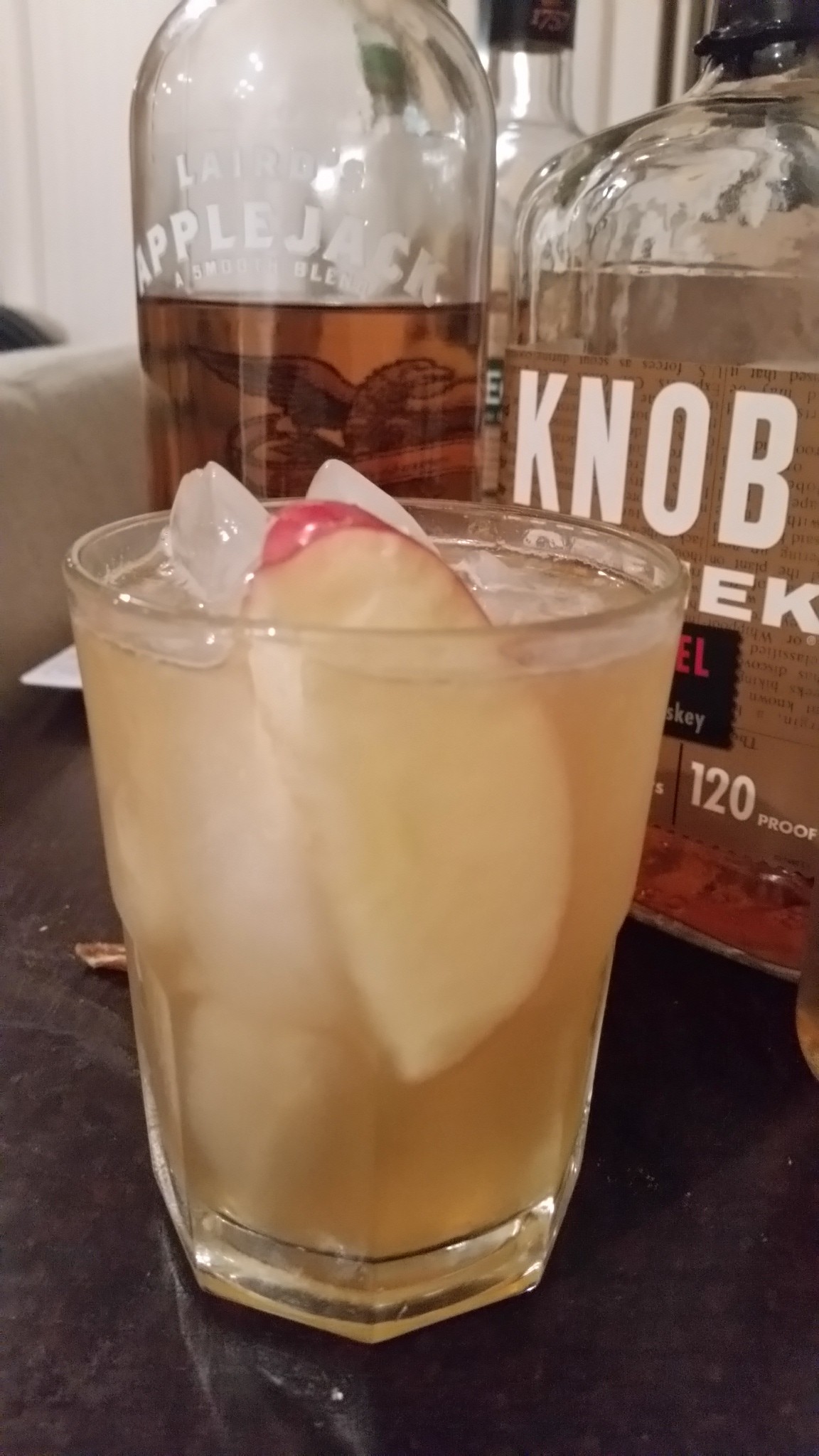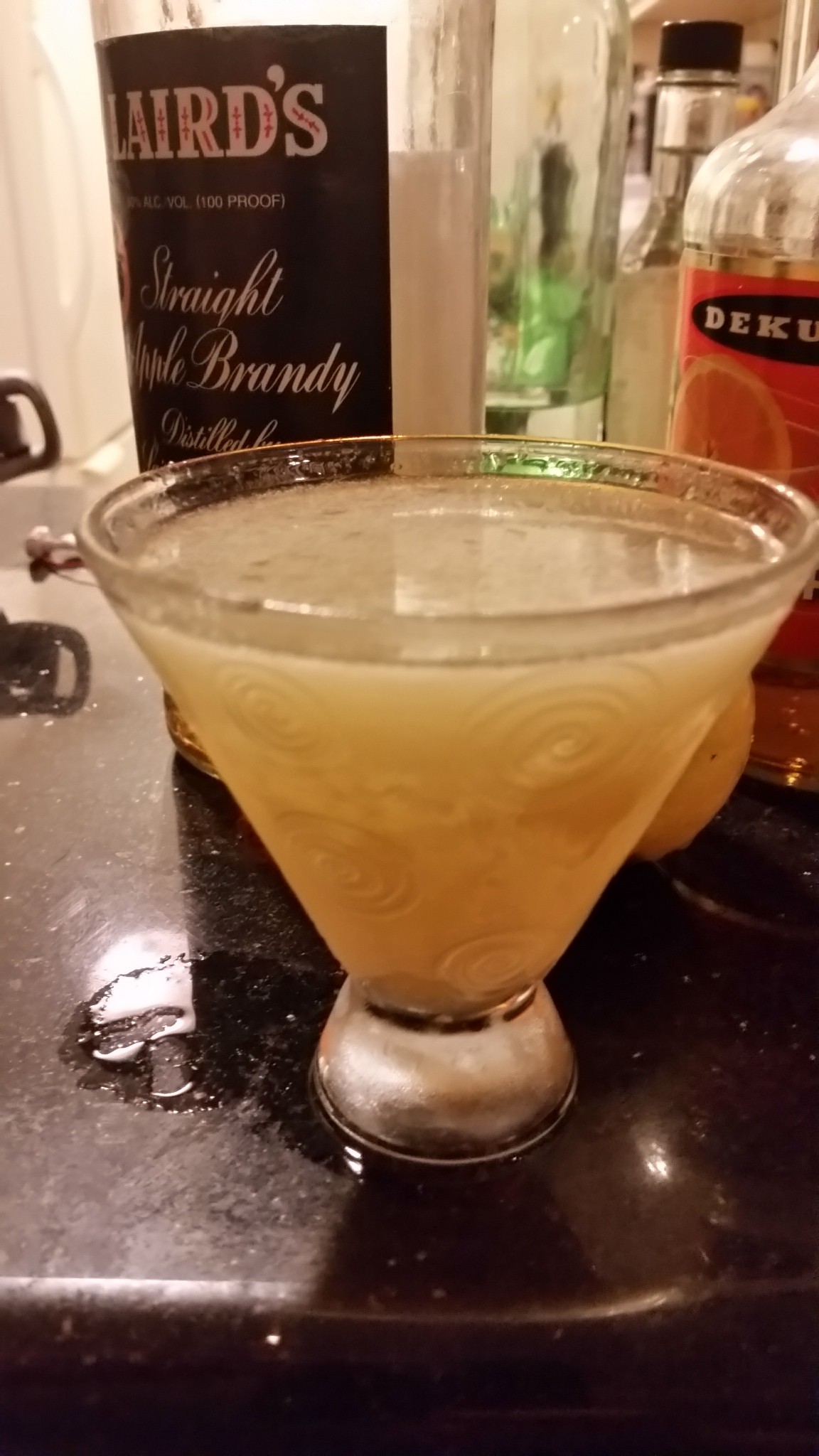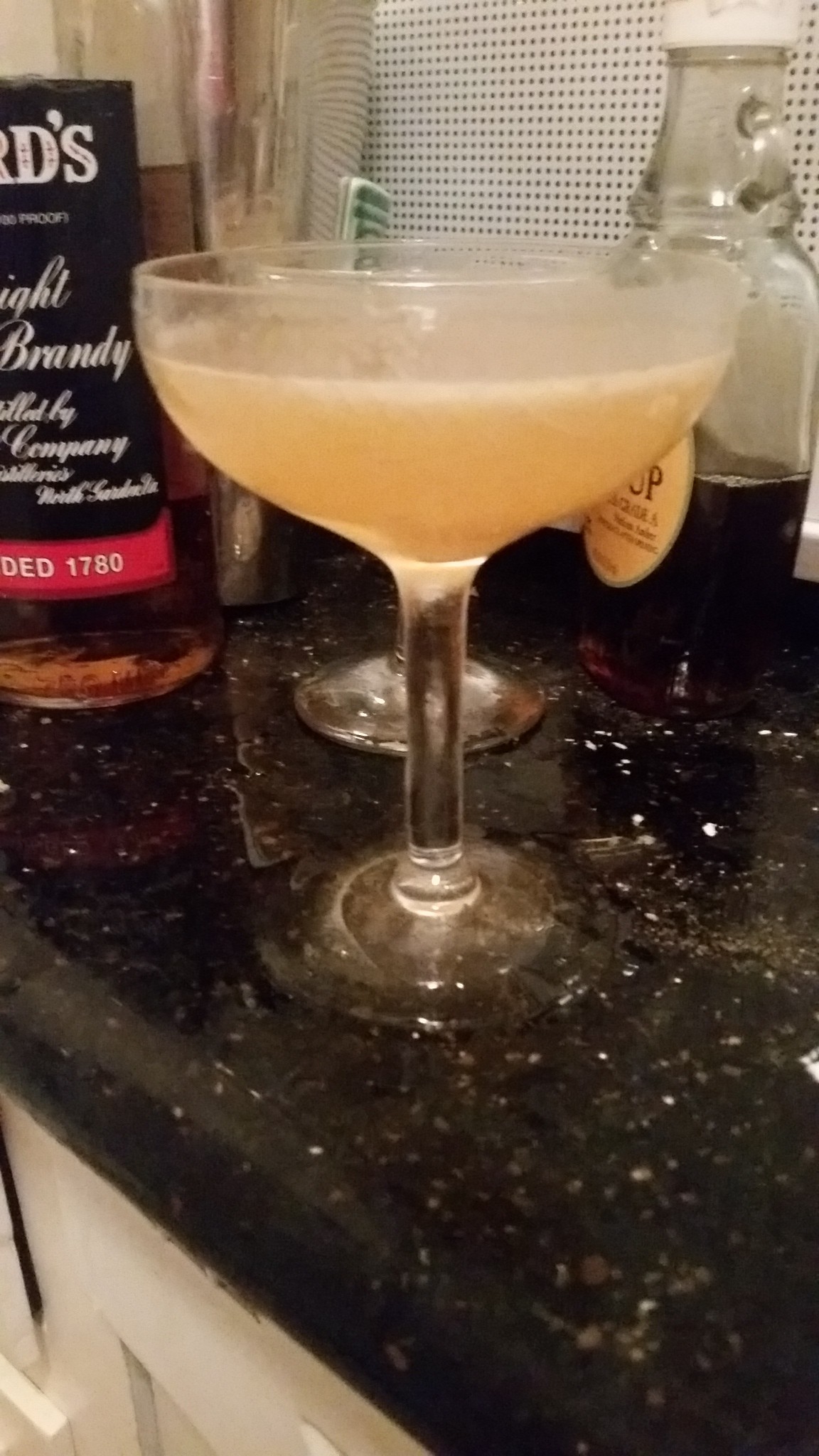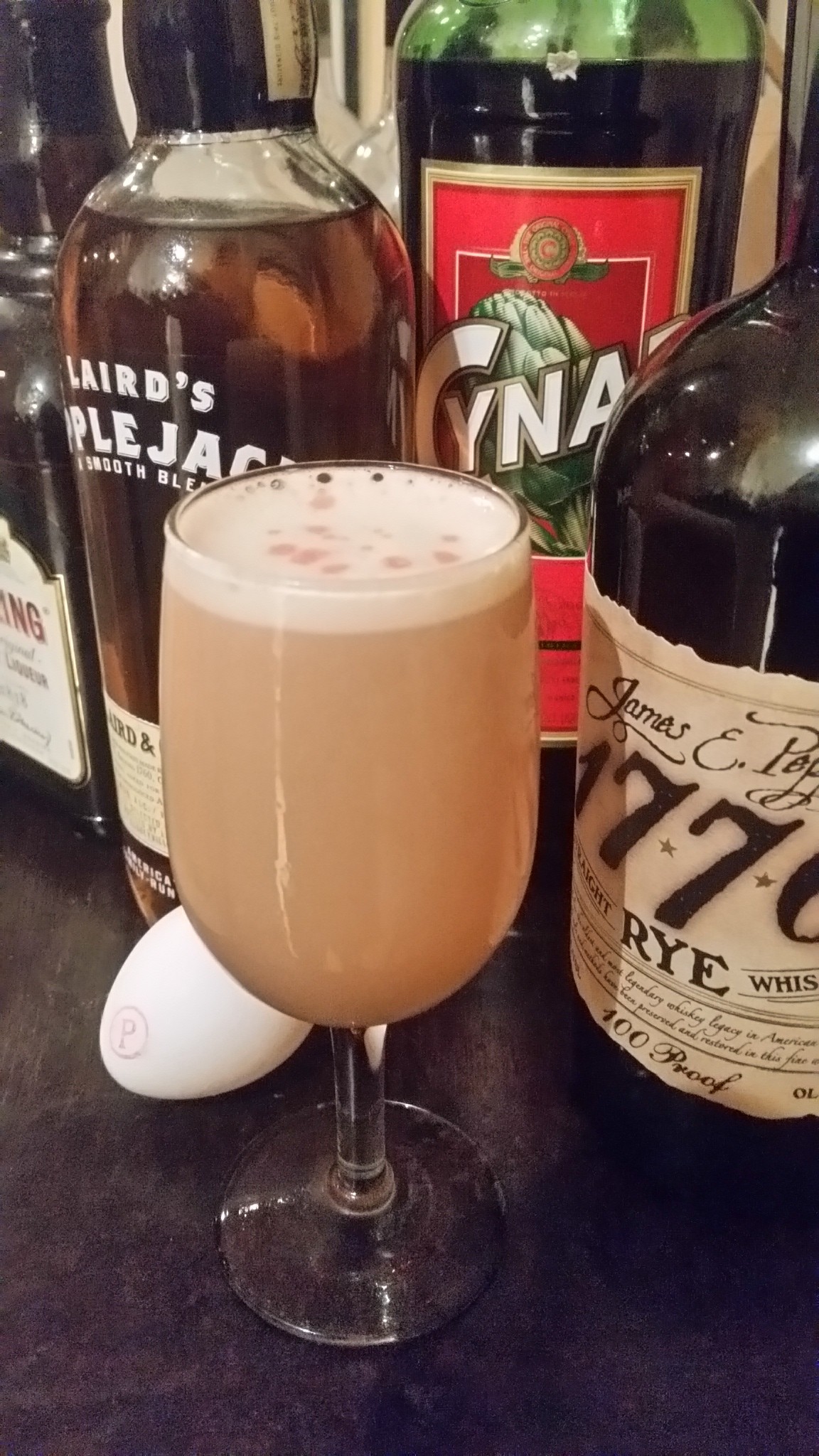 I know from all too personal experience that creating a new cocktail is a lot easier than crafting a compelling film story. Yet, they’re not entirely dissimilar in that sometimes you need one final ingredient to bring everything together…even if that final ingredient is a bit of a cliche. Yes, just as the too-little known 1958 western/family drama “The Proud Rebel” kind of needed the slightly contrived gunfight that ends it to bring everything together for a satisfying conclusion, the cocktail it inspired in me never really became something to be proud of until I came up with the idea of topping the thing off with soda water. 0 points for originality, but I’d rather win ugly than not win at all.
I know from all too personal experience that creating a new cocktail is a lot easier than crafting a compelling film story. Yet, they’re not entirely dissimilar in that sometimes you need one final ingredient to bring everything together…even if that final ingredient is a bit of a cliche. Yes, just as the too-little known 1958 western/family drama “The Proud Rebel” kind of needed the slightly contrived gunfight that ends it to bring everything together for a satisfying conclusion, the cocktail it inspired in me never really became something to be proud of until I came up with the idea of topping the thing off with soda water. 0 points for originality, but I’d rather win ugly than not win at all.
I like my drink quite a bit but I like the recently restored and sincerely entertaining film I was lucky to see at this year’s TCM Fest even more. As a pretty obvious follow-up to 1953’s “Shane,” also starring Alan Ladd, “The Proud Rebel” doesn’t get a huge number of points as groundbreaking cinema but it’s big traditionalist heart more than makes for up for it.No disrespect to the great George Stevens, who I actually think is a better director than “Proud Rebel” helmer Michael Curtiz in many respects, but in this case I prefer the quasi-knock-off to the original.
The kicker here is that, instead of chatty Brandon de Wilde as the surrogate son of ex-gunfighter Shane, we have Mr. Ladd’s real-life son, David, forced to act almost entirely without words as the progeny of a former confederate soldier struck mute by the wartime death of his mother. The 10 year-old, who would eventually become a major Hollywood player as an executive and producer, performs brilliantly not only with his legendary dad, but the film’s equally formidable leading lady, Olivia de Haviland (“The Adventures of Robin Hood” and “Gone with the Wind,” just for starters).
Oh, and there’s also a dog, played by two very convincing and charismatic canine performers (billed collectively as “King.”) And, yeah, I got choked up a couple of times. What’s it’s to you?
Sure, the movie has a somewhat disturbing undercurrent, as did many postbellum westerns, given that we’re told Alan Ladd character was once wealthy prior to the war and we all know what wealthy Southerners routinely did that, er, kinda sorta started the Civil War. Still, the drive of a father to help his son live a full life and the love of a boy for his dog pretty much transcends everything in a movie like this.
As for the drink, and yeah, there really is a drink buried in here, it’s kind of an Old Fashioned striking out out its own. This beverage lives up to it’s name. It does not back down and it takes care of what’s important.
The Proud Rebel
1 1/2 ounces Laird’s Applejack
1/2 ounce Knob Creek Single Barrel Reserve
1 teaspoon Southern Comfort
1 teaspoon maple syrup
1-2 ounces soda water
2 apple slices
1 dash aromatic bitters
Muddle an apple slice in a shaker, it might take a little bit of effort, but the more juice you get out of it, the better. Next, add all of the liquid ingredients, except for the carbonated water, together with plenty of ice. Shake vigorously, and strain — just once, no need for any highfalutin’ double straining — into a rocks glass with ice. Then, add your second apple slice as a garnish and top off with soda water, stirring gently. Toast the basic yet crucial ties that can, in a really good story, make themes as potentially bland as family ties and simple human decency enormously compelling.
****
I decided that applejack should make a return after being prominently featured in last week’s selection because, as I said last week, this might just be the most American of all base spirits…though many would certainly argue that rye or bourbon whiskey should have that honor. Splitting the difference, I’ve once again combined the two, this time spicing up my relatively mild blended 80 proof Laird’s with the 120 proof Knob Creek Single Barrel Reserve, which I happened to have on hand because of the kindly gods of PR who send me free stuff.
As I said above, adding the maple syrup, Southern Comfort, and crushed apple slice, made for an okay modification of an Old Fashioned…but just okay. It really needed an ounce or so of carbonated water to push the thing over the top. And it fits the movie, too. Because Alan Ladd’s character really is a proud guy, too proud at times. And fizzy water is proud, too? Right? Well, it’s fizzy.
 Although today’s drink comes to us from David Embury’s 1940s cocktail classic, “The Fine Art of Mixing Drinks,” it doesn’t really have any particular story to go with its classy provenance or courtly name. Embury just presents it as one of a series of drinks “based on an Applejack Sour.” It’s potentially a very sweet drink, at least on paper, since it includes both simple syrup (or sugar) and a very sweet orange liqueur. Still, the notoriously booze-severe Emory cautiously approves.
Although today’s drink comes to us from David Embury’s 1940s cocktail classic, “The Fine Art of Mixing Drinks,” it doesn’t really have any particular story to go with its classy provenance or courtly name. Embury just presents it as one of a series of drinks “based on an Applejack Sour.” It’s potentially a very sweet drink, at least on paper, since it includes both simple syrup (or sugar) and a very sweet orange liqueur. Still, the notoriously booze-severe Emory cautiously approves.
 So, if you’ve been wondering when I’d finally get around to finding a source for cocktails other than Harry Craddock’s 1930 “The Savoy Cocktail Book,” this is your week, more or less.
So, if you’ve been wondering when I’d finally get around to finding a source for cocktails other than Harry Craddock’s 1930 “The Savoy Cocktail Book,” this is your week, more or less. I know from all too personal experience that creating a new cocktail is a lot easier than crafting a compelling film story. Yet, they’re not entirely dissimilar in that sometimes you need one final ingredient to bring everything together…even if that final ingredient is a bit of a cliche. Yes, just as the too-little known 1958 western/family drama “The Proud Rebel” kind of needed the slightly contrived gunfight that ends it to bring everything together for a satisfying conclusion, the cocktail it inspired in me never really became something to be proud of until I came up with the idea of topping the thing off with soda water. 0 points for originality, but I’d rather win ugly than not win at all.
I know from all too personal experience that creating a new cocktail is a lot easier than crafting a compelling film story. Yet, they’re not entirely dissimilar in that sometimes you need one final ingredient to bring everything together…even if that final ingredient is a bit of a cliche. Yes, just as the too-little known 1958 western/family drama “The Proud Rebel” kind of needed the slightly contrived gunfight that ends it to bring everything together for a satisfying conclusion, the cocktail it inspired in me never really became something to be proud of until I came up with the idea of topping the thing off with soda water. 0 points for originality, but I’d rather win ugly than not win at all. Yes, it’s time for another four-part salute to the just now bygone Turner Classic Movies Festival of 2015. For the second year in a row, I’ll be presenting cocktails of my own creation inspired by some of the amazing films I saw this year. (If you’re interested in last year’s selections, start
Yes, it’s time for another four-part salute to the just now bygone Turner Classic Movies Festival of 2015. For the second year in a row, I’ll be presenting cocktails of my own creation inspired by some of the amazing films I saw this year. (If you’re interested in last year’s selections, start  Christmas is nearly upon us and today we have a tasty yet fairly traditional spin on the ultimate yuletide cocktail. Better yet, unlike most members of the egg nog/egg flip family, the Jack Maple Egg Nog is a true cocktail in the classic sense in that it includes bitters.
Christmas is nearly upon us and today we have a tasty yet fairly traditional spin on the ultimate yuletide cocktail. Better yet, unlike most members of the egg nog/egg flip family, the Jack Maple Egg Nog is a true cocktail in the classic sense in that it includes bitters.








